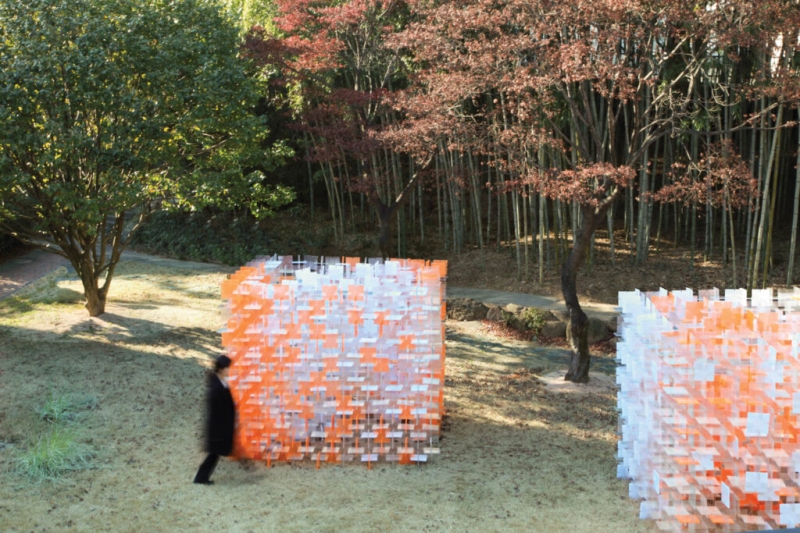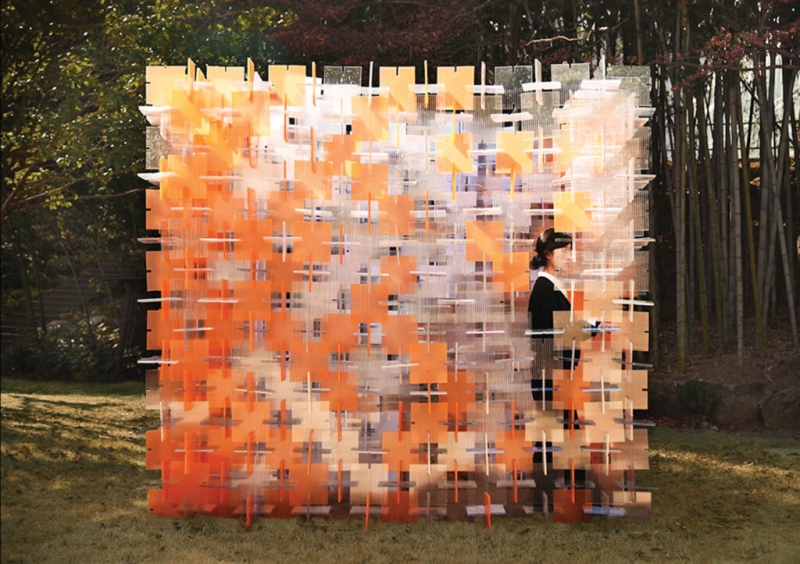Architecture students and A+U Lab construct a pair of large-scale outdoor cubes on a university campus in Busan, South Korea, to immerse viewers in the possibilities of polycarbonate.
An Insider’s Look Into The Potential Of Polycarbonate
- Ten students and researchers led by Pusan National University professor and A+U Lab director Lawrence Kim
- 3,500 interlocking polycarbonate panels
- Six months of design and construction
- Over eight feet high and wide
For Paired Cubes, two temporary pavilions at South Korea’s Pusan National University, where Lawrence Kim is a professor and the A+U Lab director, students and staff 3-D modeled a self-supporting structure made of polycarbonate panels large enough to accommodate several humans at a time.
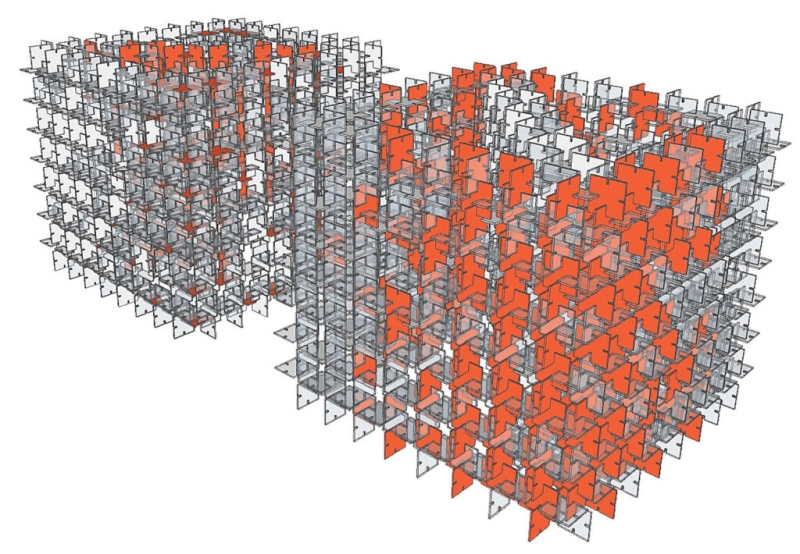
Physical mock-ups were then crafted from foam board.
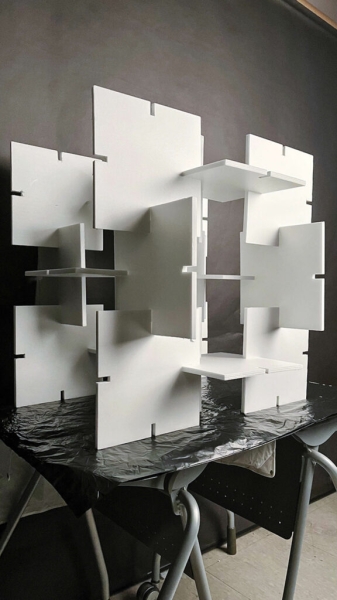
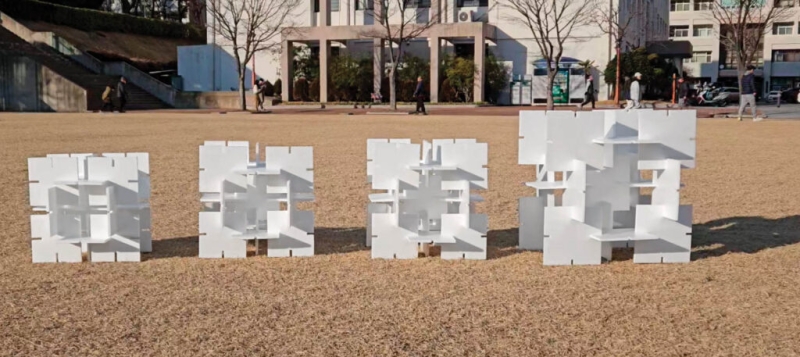
The crew experimented with polycarbonate in various thicknesses, colors, and translucencies to determine which would best allow for natural light passage but still be sturdy enough structurally.
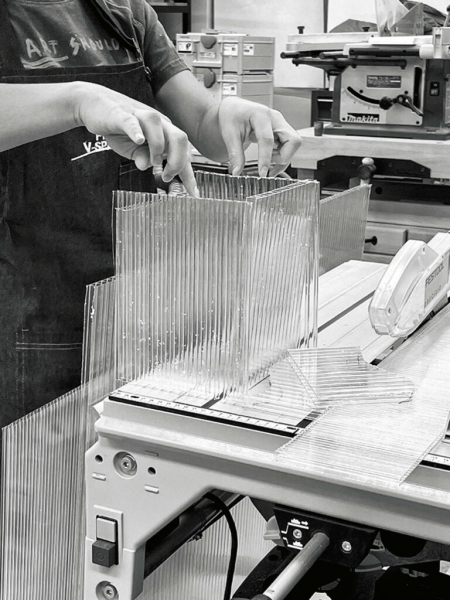
The final scheme called for 10mm-thick panels in orange, white, and clear, cut so the panels could interlock and form tall volumes that can stand on their own.
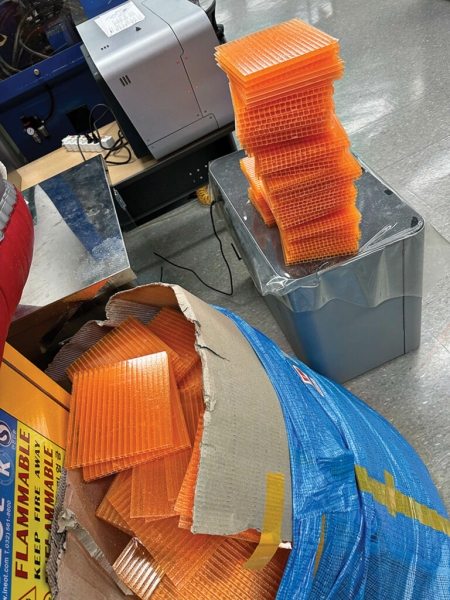
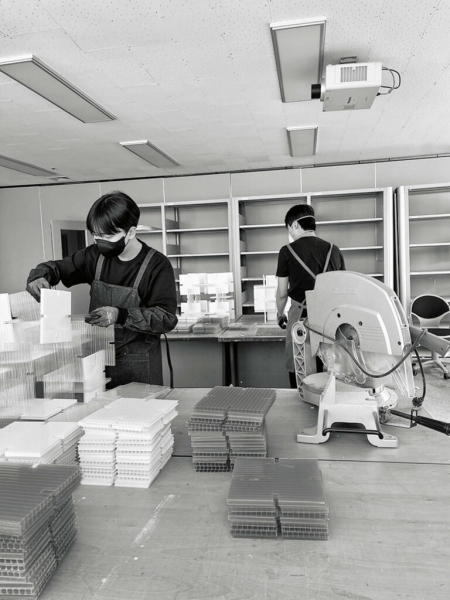
They were assembled and installed at Unjeugjeon Garden on the PSU campus.
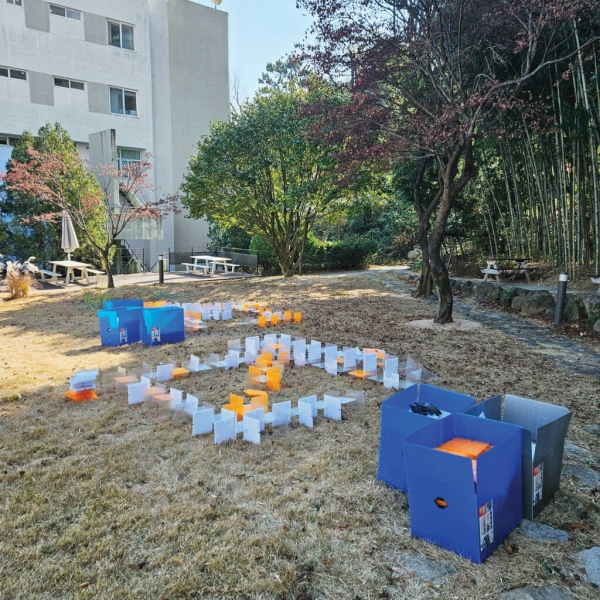
Ladders were needed to reach the top of the structures.
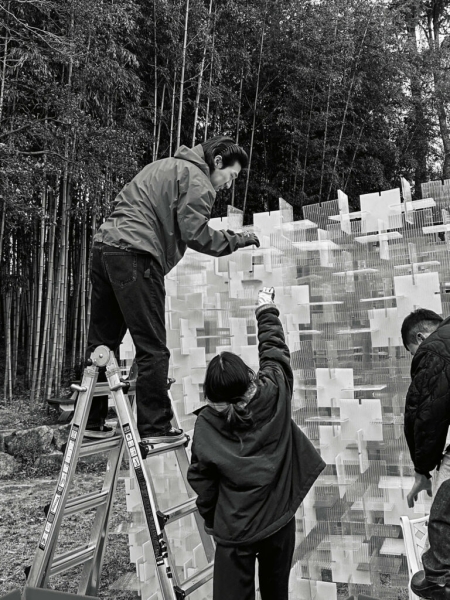
The 67-square-foot interiors of Paired Cubes, which stood for four weeks last winter in PSU’s bamboo garden before being dismantled, reconstructed, and exhibited another month inside a campus building, each fit up to six people, standing or sitting on the floor.
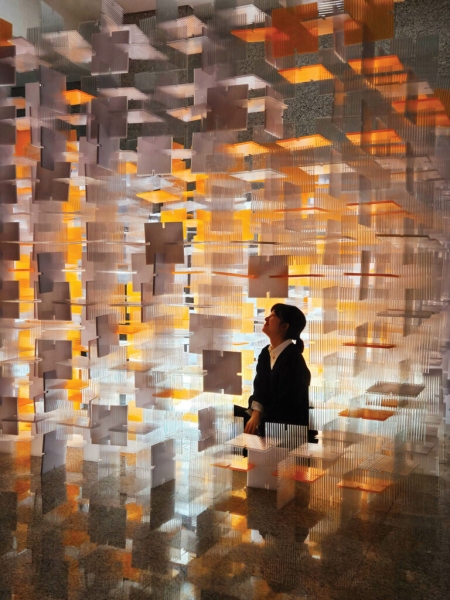
Although each cube had inside space, they were essentially open-air structures; rain would simply wash down the panels.
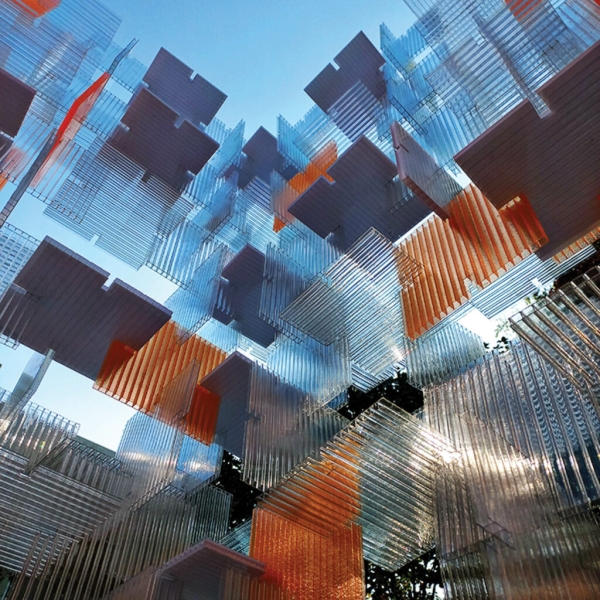
The majority of the panels are clear polycarbonate, with orange and white each composing approximately a third.
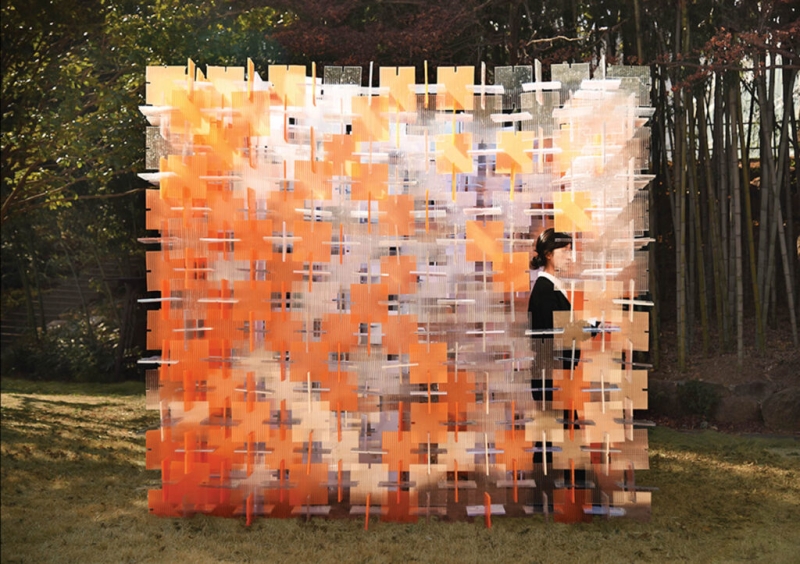
Paired Cubes is Kim’s eighth installation exploring materiality—“applying materials as spatial devices while also accentuating their beauty”; prior works utilized such items as paper, wool, silk, and mirror.
